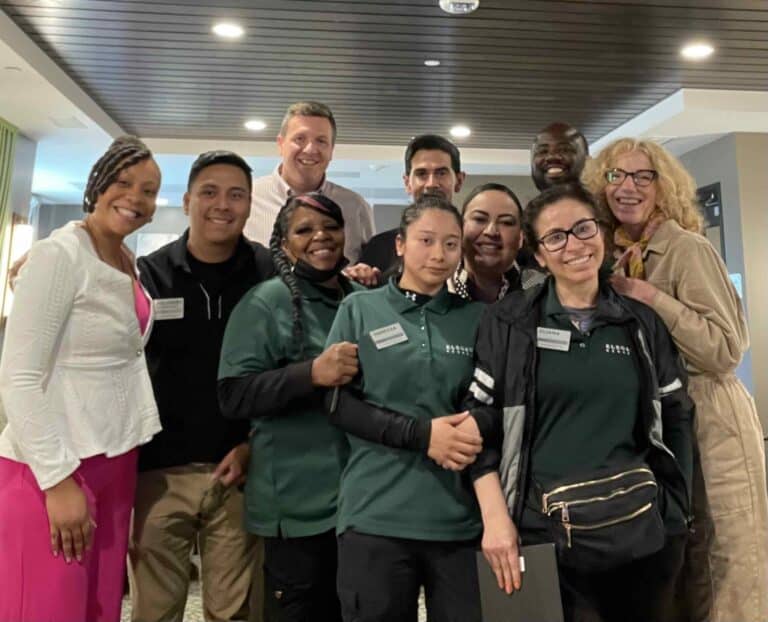In times of stress the most resilient organizations are the ones most likely to bounce back and emerge stronger than ever.
In a previous post we covered six tactics HR departments can use to create resilient workforces. But what we missed in that discussion was one key hallmark of resilient organizations – which is the ability to innovate.
While innovation is a corporate buzzword when it comes to strategy, it’s more hidden but equally vital when it comes to how HR can actually help build a company’s innovation muscle.
What follows is an excerpt from a panel discussion featuring the Head of HR at Bloomberg, the former CHRO of Dollar General, and a senior People Strategiest at Google focusing on controllable elements that lead to innovative cultures.
Check out our webinar with mental health experts Dr. Jess Williams and Bianca Coleman for more tangible suggestions on supporting employee mental health.
Innovation is a Hallmark of Resilient Companies
Daniel Freedman, Co-Founder and Co-CEO of Burnalong
You know, one big mark of change within a company, one hallmark of resiliency is that ability to innovate and change is needed. And how much is that down to the organization serving as a catalyst for that? What’s that role, versus individuals bearing the responsibility themselves?
Ken Cooper, Head of HR at Bloomberg
Well, I think I think it’s both. But the organization has to certainly foster innovation and allow for that creativity. Google famously (although I think is more myth than reality) had that 20 percent of your time where you could do your own thing. The reason I say myth whenever I ask someone to Google is that what do you do with your 20 percent? They’re like, oh, no, I didn’t really have that time. But I’m not beating up on Google. It’s an amazing company. But that’s an example of a company that explicitly said, here, we want you to be creative, we want you to do things, we want you to innovate.
Along with tactics to give time for innovation, celebrating innovation means you have to celebrate people’s failures. Because if you want people to take risks and you want people to try new things, it’s not always going to work. And if all you do is criticize people that fail, then the message is going to be very clear. I’m not going to take a risk. I’m not going to try something different again. But if you celebrate the people that take risks, even when they fail, that sends a very powerful message too: it says, “hey, we gave it a try. It didn’t work, but we’re trying again.”
“Along with tactics to give time for innovation, celebrating innovation means you have to celebrate people’s failures. Because if you want people to take risks and you want people to try new things, it’s not always going to work. And if all you do is criticize people that fail, then the message is going to be very clear. I’m not going to take a risk. I’m not going to try something different again. But if you celebrate the people that take risks, even when they fail, that sends a very powerful message too: it says, “hey, we gave it a try. It didn’t work, but we’re trying again.”
So I think part of the culture of a company has to be to celebrate the failure. Otherwise, people won’t do it. So I think, yes, the individual has to be there, but the company has to foster that environment. Without the company fostering that environment. People will just not do that.
Bob Ravener, Former CHRO of Dollar General
I also think the tone at the top is really critical. I think it’s vital to have people feeling like they’re moving in the right direction. And I’ve always been a big fan of ongoing routine and regular communication. I think it’s even more critical now for organizations to do that. And that’s both broadly speaking from the top down. But I also think at the local leader level in terms of applying to every individual manager who’s leading a team.
One thing we haven’t talked about is that there have been some positive outcomes related to this work. I think some companies were at least in a good place where they could turn rather quickly into a virtual kind of setting. Others that were maybe behind the curve or weren’t set up for it quickly got on board and are starting to move in the right direction.
If you think about the restaurant industry, they were able to adapt and they’ve probably been impacted more than just about anybody because of the personal interactive nature of the way they do business, both within the kitchen to serving the customers within the confines of the stores to how they would basically serve on a daily basis. And what I’ve seen everywhere has been shifting to calling and getting pickup deliveries delivered pickup at the curb. The city’s adapting to giving parking spaces to restaurants to be able to do that. Working toward, if you think about in all places where there wasn’t maybe necessarily an organization set up for outside dining because that’s a safer environment, finding ways to do that. And I like the way that cities and municipalities have been able to work with those environments.
“Public organizations are willing to work with the private sector to try to help everybody get to a better place. And I think the more you can continue to work on those partnerships and help people figure out collectively how we can continue to stay afloat and work better, more success will happen.”
And so I think what you found in these settings is as companies and organizations think of working together with outside entities and I’d call them private-public partnerships. Public organizations are willing to work with the private sector to try to help everybody get to a better place. And I think the more you can continue to work on those partnerships and help people figure out collectively how we can continue to stay afloat and work better, more success will happen.
Psychological Safety is the Starting Point for Innovation
Daniel Freedman
Psychological safety and psychological resiliency [seems key] with everything that’s going on, and that’s not just COVID, but protests and different emotions that people are feeling. Dipti, how do you think through that as you guide teams or make recommendations for teams?
Dipti Sirisinahal, People Strategist at Google
I would say psychological safety or psych safety, as we call it at Google, it is very, very important because that the foundation of all the innovation that we do. People will not be trying out new things and taking risks if there wasn’t that safety net for them. So it’s really, really the foundation of everything that we do.
“I would say psychological safety or psych safety, as we call it at Google, it is very, very important because that the foundation of all the innovation that we do.”
And we build it at the individual workgroup levels. And we actually even ask about that in our employee engagement surveys. We talk about like, “hey, do you feel safe on your team? Do you feel like you can voice your opinion and feel respected on the team? “And those are very, very important things for us.
Even Box the previous company that I worked at was very, very good at building trust at the employee level, as well as at the organizational level. And at the organizational level it comes from leadership. Trust comes from leaders being vulnerable. And that’s a very hard thing for leaders to do, to admit that you may not be the expert on something and go find the person who may be in your organization.
“At the organizational level [psychological safety] comes from leadership. Trust comes from leaders being vulnerable. And that’s a very hard thing for leaders to do.”
And you know, when the Black Lives Matter movement was at its peak, a lot of leaders were sometimes even afraid or feared going and having a conversation about that to their employees. And there was nothing worse than not talking about it. So leaders realized that it was more important to show up and say, “Hey, I don’t know, I don’t have all the answers. I don’t know everything. But I’m here to listen.” And sometimes it’s important for leaders to be that container that allows for other people’s thoughts to be there, even if they might not be contributing to the stuff in the container if you will. So vulnerability, I think, at the leadership level is key and peer-to-peer support at the individual and team level is key to building that trust, which in turn kind of provides that safety.
Why Safety and Risk-Taking Create Resiliency
At the world’s most innovative companies it’s the ability to give employees space to fail and room to be heard that leads to innovation. And innovation is what allows a company to adapt to new, stressful events, to move forward and create new structures that work in whatever shifting reality the company faces.





